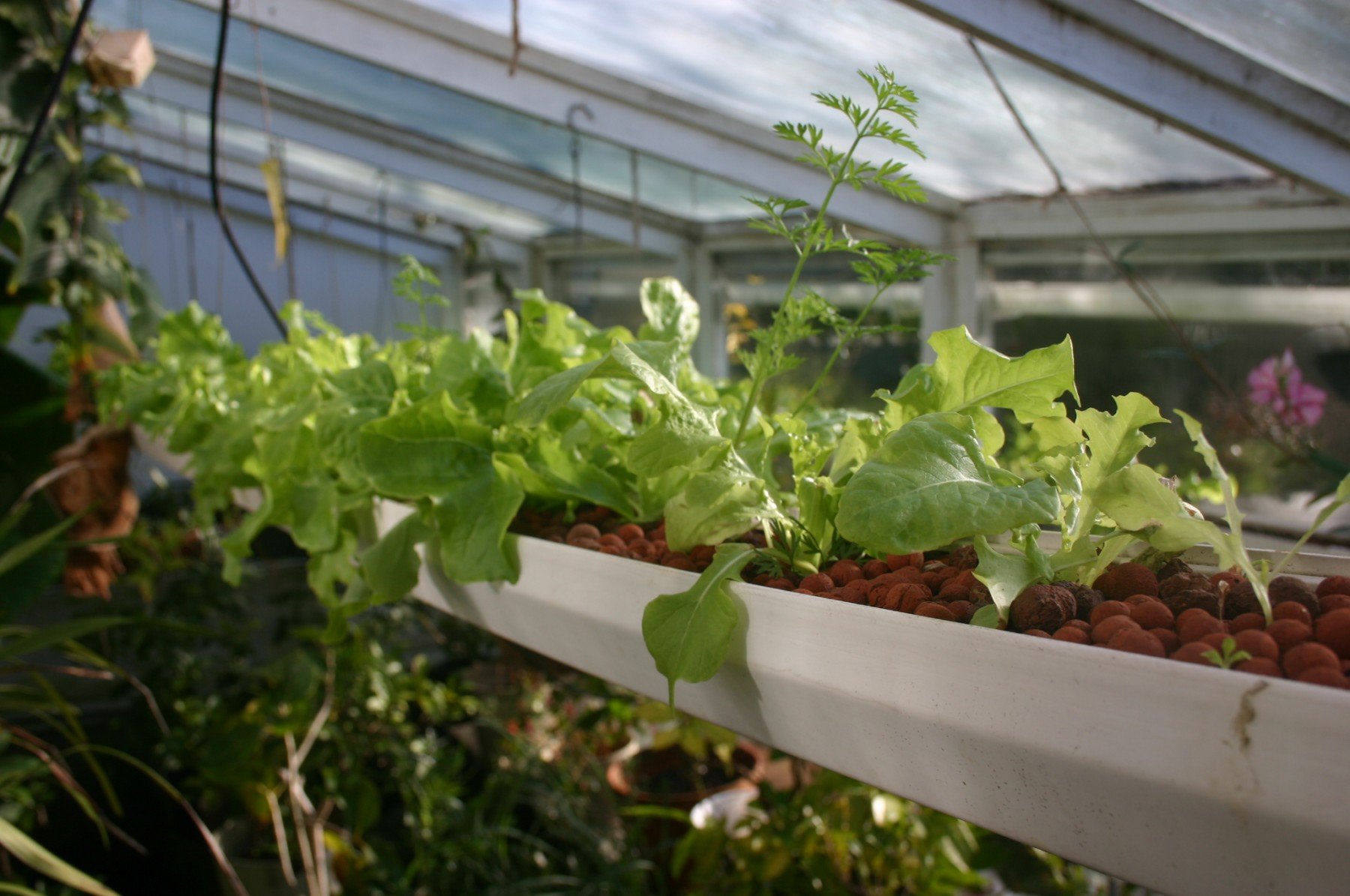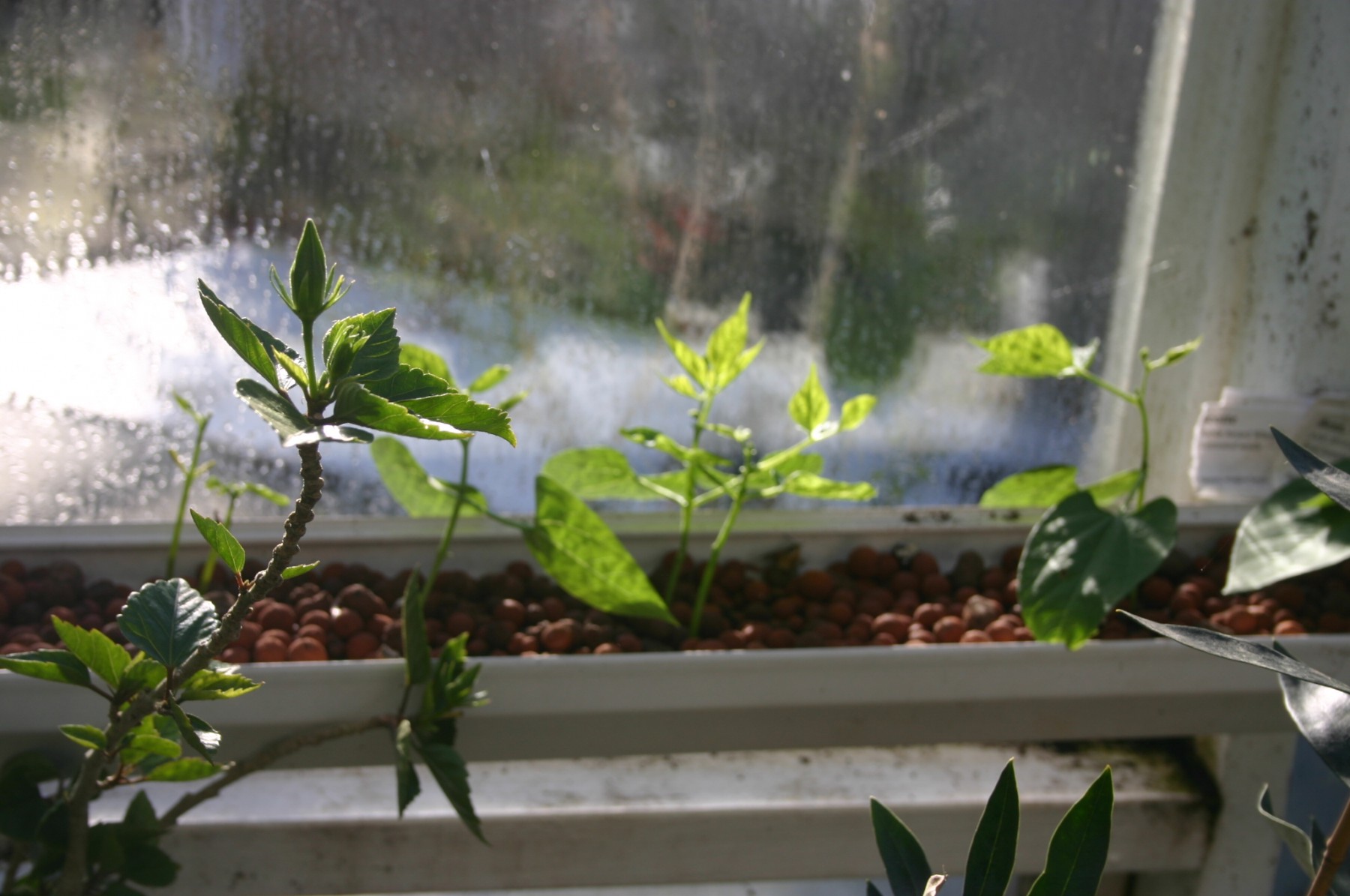
For a number of years, I’ve grown lettuce in plastic gutters in my greenhouse. The installation is simple: Each ten-foot-long gutter hangs from brackets on a greenhouse wall, with one end four inches lower than the other. I fill the gutters with clay pellets to give the plant roots something to grip. A fish-tank pump pushes nutrient solution from a reservoir (a ten-gallon bucket) to the gutter’s high end, from where it flows to a pipe at the low end, which leads back to the reservoir. The nutrient solution is a high-nitrogen, organic fertilizer (suitable for leafy greens) diluted with water. You can buy a concentrated 16-ounce bottle of it for about $5, and it will last roughly six months.
As for the lettuce plants, I first grow them in ordinary potting soil until the leaves are about 2” long, at which point I remove the plants, rinse off their roots, and put them in the pellet-filled gutters so that the roots touch the bottom where the nutrient flow is. With this simple system, I can grow about fifteen heads of lettuce in thirty days. By staggering my planting, I can harvest a head of lettuce every two to three days. I’ve also used this system to grow other plants, including kale, baby chard, and spinach, as well as string beans and peas, which hang down from the gutters. Once I even grew a carrot, but it was half an inch long and four inches wide!

This year I’ve replaced my gutter system with professional hydroponic channels, a larger reservoir (50 gallons), and a larger circulating pump attached to multiple feeder lines. I’ve also expanded the length of the system to 140 feet by putting two sets of channels around the greenhouse walls, giving me the capacity to grow about forty heads of lettuce a week. Not that I intend to grow that much lettuce! I plan to grow spinach, arugula, kale, basil, baby chard, and other greens too.
In this new system, each plant grows in its own cube of rockwool inserted into a hydroponic channel so that the plants are spaced about 8” apart. As time goes on, I’ll keep you informed about how well this system works. Later, I plan to convert it to an aquaponic system in which fish are grown in a tank and the nutrient-rich fish water is circulated through the channels. Stay tuned!










